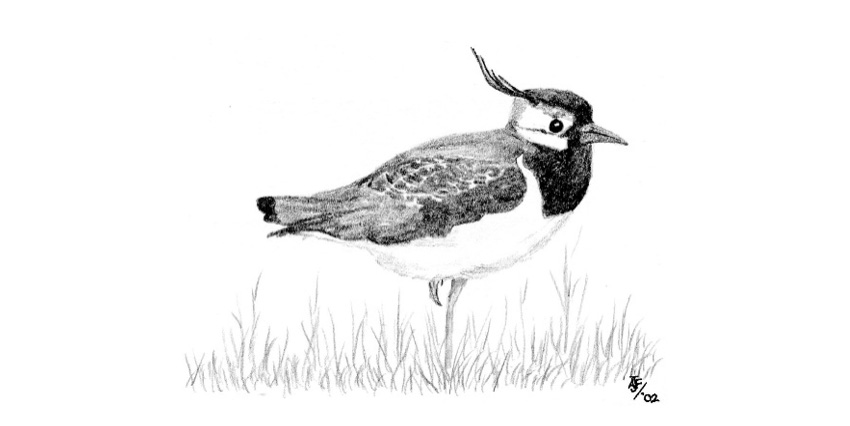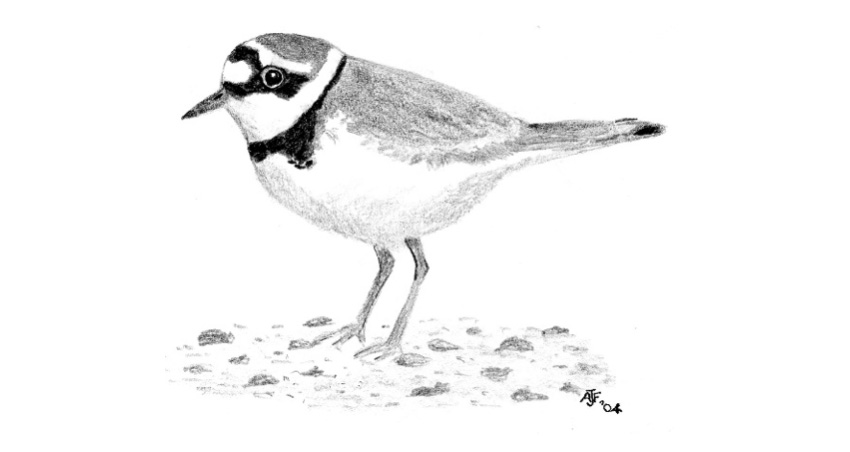Very rare visitor
One record: one at Fairlands Valley Lakes on 2 November 2024.
Very rare visitor
One record: one at Fairlands Valley Lakes on 2 November 2024.
Irregular winter visitor and passage migrant.
Foster (1914) referred to flocks of many hundreds wintering in north Hertfordshire between October and April. Since then their numbers in Britain have decreased due to overgrazing and deterioration of the moorlands where they breed, and the intensification of agriculture on the arable farmland where they winter.
The 2012 Winter Atlas confirmed their presence from the tetrads covering Lister Hospital, Pin Green and, Chells Manor.
There is one autumn record of two flying over the Broadwater area and, calling on 6 August 1967, and four spring records from Norton Green Tip of, one on 21 March 2009, seven flying over on 9 April 2013, 14 flying low over on 30 March 2014 and, c.35 flying over on 2 April 2022.
The winter records for Stevenage are: 200 in the winter of 1941/2 between Knebworth, Datchworth and Bragbury End; up to 10 at Norton Green tip between 27 February and 15 March 1991; four near Holbrook Farm, Aston on 25 January 1998, up to 30 seen with Lapwings (Vanellus, vanellus) along Watton Road between Bragbury End and Knebworth on 31 December 2001 and 1 January 2002; 25 flying over Mobbsbury School, Chells on 6 December 2004; 250 along Watton Road on 1 December 2005; 130 along Watton Road on 3 January 2009.
Passage migrant and winter visitor, and scarce breeding resident.

Sage (1959) described Lapwings as, “common in the Stevenage area”, they have since declined considerably as a breeding species due to the development of the town. They have also declined nationally by 43% since 1995 due to changes in farming practices such as the change from spring to autumn grown cereal crops, mechanised cultivation, chemical spraying and the reduction of pasture.
The 1973 Breeding Atlas confirmed breeding from six of the Stevenage’s tetrads, the 1992 Atlas from one. No confirmed breeding was recorded by the 2012 Atlas, with only probable breeding recorded from one tetrad (Norton Green).
The 2012 Winter Atlas confirmed their presence from the tetrads covering Chesfield Park and, Boxbury Farm.
Large numbers of Lapwings used to be found at Norton Green Tip, where they also bred. 200 were seen there on 1 March 1974, 300 on 7 December 1998 and 100 on 10 December 2004. The largest flock since 2004 is of 38 on 18 November 2014. In 1989 ten breeding pairs were recorded. A chick raised at Norton Green and ringed on 2 May 1985 was found dead at Cleder, Finistere, France on 18 March 1986, 454 Kilometres south west of the nest site. Ploughing of a set-aside field next to Norton Green Tip in early May 2018 wrecked a breeding attempt.
Lapwings were more commonly seen on autumn migration and in the winter, when they formed large flocks, such a flock used to be found in the Watton Road area between Bragbury End and Knebworth, where between 200 and 250 were seen on 24 October 1978. Other large flocks recorded are: 200 between Knebworth, Datchworth and Bragbury End during the winter of 1941/42; 100 to 200 near Box Wood between 12 and 19 August 1965; 100 near Box Wood on 10 October 1965; c.150 at Astonbury on 19 November 1972; up to 100 at Astonbury and Bragbury End in January 1973; 200 to 300 Coreys Mill on 27 December 1974; 380 near Astonbury on 19 January 1975; 200 at Coreys Mill in November and December 1976; 220 at Astonbury on 5 February 1978; 200 at Astonbury on 17 December 1978; 400 at Coreys Mill in October 1979; 120+ Norton Green area on 15 March 1980; 200+ Aston End September 1980.
Away from the rural edges of the Stevenage, they have in the past been seen at King George’s Playing Fields in winter, and in the fields of the sites of Angotts Mead and, Woolenwick School in the late 1940’s. 10 were seen at Fairlands Valley Lakes in the early morning of 25 January 1994, and a flock of 60 were seen passing over there on 23 October 2004. In 1983 a small flock was seen on a flooded piece of ground that is now the site of the Range and Wicks Stores in Broadhall Way.
The most recent records from Stevenage are: one flying over Fairlands Valley Lakes on 9 October 2021; one at Potters Spring on 12 April 2022; one at Fairlands Valley Lakes on 19 October 2022; 50+ flying west over Chells/Shephall on 18 December 2022; one near Astonbury on 31 May 2023; three flying over Fairlands Valley Lakes on 26 June 2024; one at Fairlands Valley Lakes on 30 July 2024; c.15 flying over Astonbury Wood on 24 December 2025.
.
Passage migrant which has bred.

Little Ringed Plovers are recent colonisers of Britain, breeding for the first time in the Country at Tring Reservoirs in 1938. Their natural breeding habitats are river shingle and sand spits, in Britain they use gravel pits, tips, industrial sites, sewage works and reservoir margins, two of these habitats have been used as breeding sites in Stevenage.
Successful breeding was recorded from Stevenage in 1977, 1978, 1979, 1980 and, 1981 at an unrecorded location.
Between 1983 and 1992 Little Ringed Plovers were present at the former Stevenage Development Corporation Tip at Norton Green with breeding confirmed from there in 1984, (when two pairs raised three juveniles), and 1989. The earlier records may also relate to this site. “Off road” vehicle driving eventually caused their abandonment of this site and they began using nearby demolished factory sites. In 1993 two pairs raised four young at the former Kodak factory site and returned again in 1994 to this site and the former George W. King factory site. Unfortunately, the George W. King site has since been redeveloped as the Stevenage Leisure Park. A pair returned to the Kodak site in 1996 but did not breed. On 29 March 2008 a passage bird was seen at Norton Green Tip.
Passage birds have also been seen at Fairlands Valley Lakes; 14 and 20 May 1980, 29 June 1995 (when an immature was seen), 13 June 2008 (when two were seen on the bed of the drained Main Lake), up to three seen from 3 to 8 June 2009 (again whilst the lake was still drained), one on 23 March 2019 and two on 13 July 2022.
One was seen at the pond behind Norton Green Cottage (now the site of Pigeonswick Close) on 15 April 2015.
Occasional passage migrant, mainly in spring and, rare winter visitor.
Passage birds have been seen at Fairlands Valley Lakes: autumn of 1974, 3 May 1978, 29 May 1975, 18 August 1975 (when two were seen), 3, 7 and 9 May 1980 and 22 April 2024. There is also a winter record from 19 January 1996.
Other records are; of single birds at unrecorded locations on 1 September 1979 and 5 April 1982, and three at Norton Green Tip on 11 March 1989.